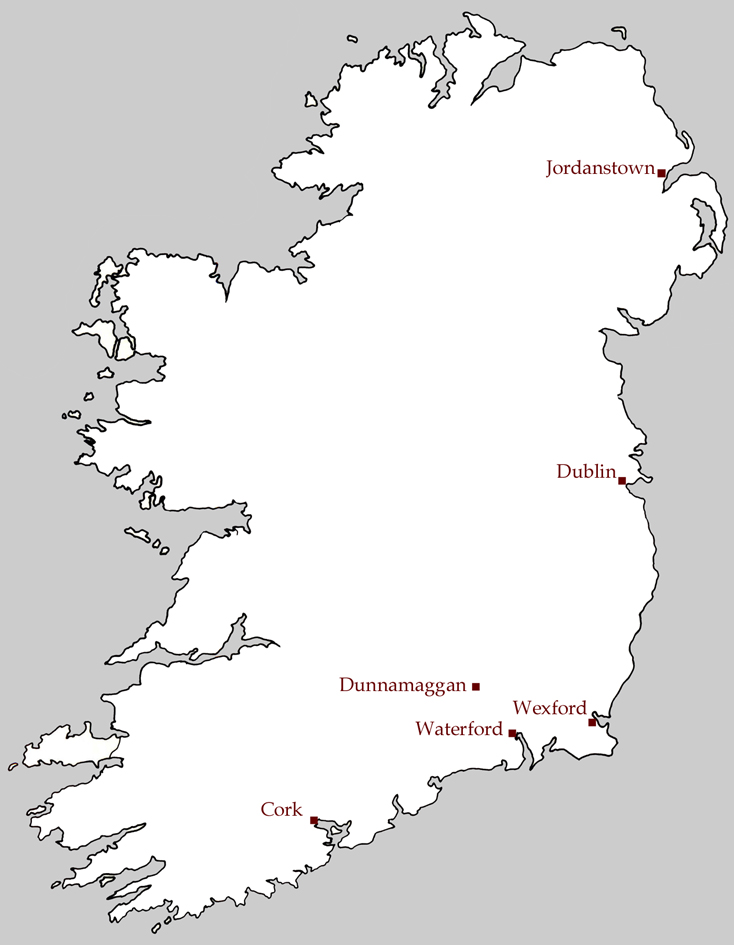

In 1166 Henry II had authorised Dermot MacMurrough, king of Leinster, to recruit followers from among the barons of the Welsh marches to help him regain his kingdom; he had been ousted by Roderick O'Connor, high king of Ireland. Dermot enlisted the help of Richard of Clare, second Earl of Pembroke, a short and very lightly built man who had inherited his father's nickname of Strongbow. In 1169 numerous adventurers landed in Ireland, followed in August 1170 by Strongbow himself with 200 knights and 1,000 archers. These allies enabled Dermot to recapture more than he had lost. By May, 1171, Strongbow and his allies held Dublin and Waterford and were in control of Leinster, but Dermot had died and the invaders had temporarily lost Wexford. Meanwhile, Henry II was alarmed at their success and had no intention of allowing any Norman baron to become king of Ireland. Thus Henry decided on his Irish expedition, primarily to assert his authority over his own subjects. He succeeded in that objective before military operations even started. At Newnham in Gloucestershire, Strongbow, faced with the king and his army, did homage for Leinster and surrendered Dublin, Waterford and Wexford to the English Crown.
Henry crossed to Ireland, in October 1171, with over 4,000 men, of whom 400 were knights. He had no intention
of making a complete conquest, but was content with the local Irish chieftains paying simple homage and the planting
of garrisons in the ports and a colony of English traders in Dublin. At the head of the administration he placed
Hugh de Lucy as justiciar; Strongbow retired to his fief of Leinster. Such was the curious origin of the English Pale in
Ireland, and of so much hatred and bloodshed between the two countries. It happened that the Irish were never to be
strong enough to eject the English nor weak enough to merge their identity with them. Had Henry II been less of a statesman
he would no doubt have completed the conquest of Ireland, but he had first to wait on the Pope's mission (of two Cardinals
to give the Pope's decision on the King's case in connection with the murder of Thomas Becket), and, putting first things
first, he left Ireland in April 1172.
[acknowledgements for the above to An introduction to the History of England, From the earliest times to 1204, Jerrold, 1949]
With other landowners at the mouth of the Parret and on the other side of the Bristol Channel, the Pohers were among the first Anglo-Norman adventurers in Ireland. Cogans from Huntspill and Raymund de Cantitune (Cannington) had accompanied Strongbow. Robert Poher sailed in 1172, John de Curci and Miles de Cogan in 1176, and William Poher, brother of Robert, and John Poher, son of Robert, set out in 1186.
The name Galfridus de Kidenore (Geoffrey of Chetenore) occurs in the "Dublin Roll of Names', which appears to be the oldest existing roll
in connection with the Anglo-Norman settlement in Ireland. It is not known why this roll was made; it may be a roll of
citizens of Dublin; it contains some 1700 or 1800 names of Anglo-Normans who were in Ireland between, say, 1175 and 1195.
Source: Historic and Municipal Documents of Ireland A.D. 1172-1320. edited by J.T. Gilbert, FSA.
Between 1230 and 1250 John de Katenor granted to Waleran de Katenor and his heirs his tenement in Dunnamaggan in Co. Kilkenny
together with the lordship of three tenements held of him in Dunnamaggan and the lordship of a carrucate which formerly
belonged to the monks of Canterbury; the whole being held of Sir Waleran de Wellesley by charter for a pair of white gloves
at Easter, or a penny, and the service of an archer
Source: Calendar of Ormond Deeds, Vol. I, No. 77, Edmund Curtis, (1932).
One of John de Katenor's tenants in Ireland was the heir of Thomas Sygyn. In 1257 a Thomas Sygyn, with others from the Kitenore area
was found by a Forest Court guilty of poaching deer in Exmoor Forest. He was not found and was outlawed. Thomas Sygyn in
Ireland must have been an Exmoor man.
Source: Calendar of Ormond Deeds, Vol. I, No. 77, Edmund Curtis, (1932).
In a charter of the Hospital of St John the Baptist, Dublin, of about 1300, Hugh de Katinora is mentioned as renting
a house in the vill of Thulac" of Milo the carpenter.
Source: Register of the Hospital of St John the Baptist, Dublin.
On October 20th, 1302, John Kidenor was a juror on an inquisition in County Dublin.
Source: Calendar of the Justiciary Rolls, Ireland, 1295-1303, James Mills, (1905).
William Kedenor was a monk at St. Mary's Abbey, Dublin, in 1315. At Vespers on the 1st December, 1320, he killed two monks in the
choir of the Abbey. He was comitted to prison in Dublin jail and, by the order of the Justiciary of Ireland, transferred
to the prison of St Mary's Abbey, where he was when he died.
Source: Chartularies of St Mary's Abbey, Dublin., J.T. Gilbert (1884).
Last updated on 17th January 2014
